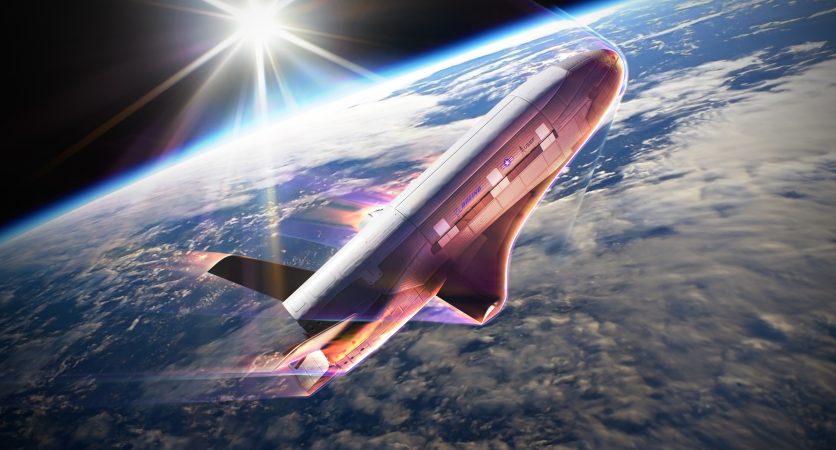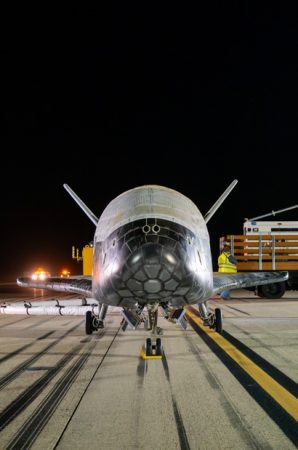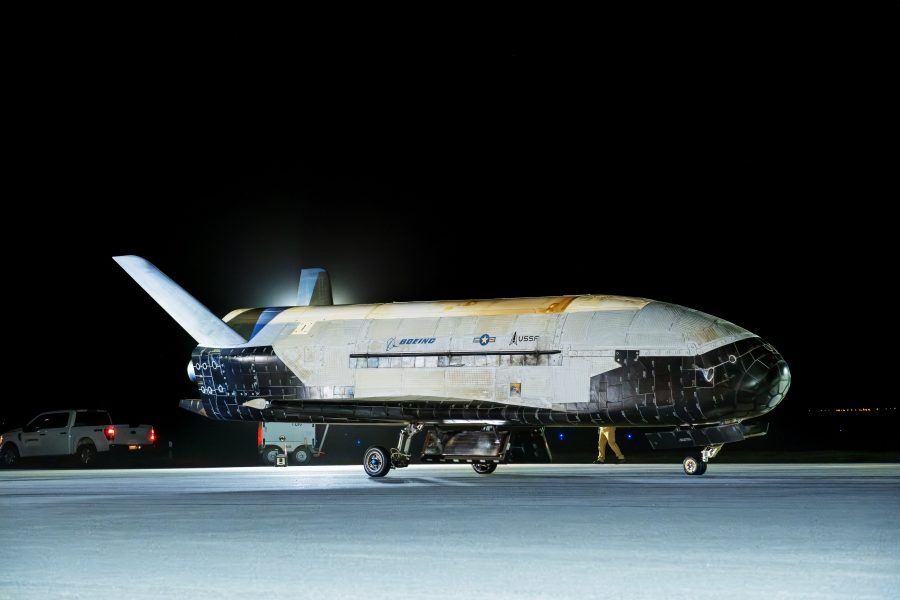X-37B, the Space Force’s secretive spaceplane, returned to Earth early March 7 after more than a year in orbit, touching down at Vandenberg Space Force Base, Calif., the service announced on social media, saying the spacecraft “successfully deorbited and landed” at 2:22 a.m. local time.
The X-37 launched Dec. 28, 2023, making its 435 days in orbit the second shortest of its seven missions and its briefest in more than a decade.
The Space Force used its latest mission to fly in “different orbital regimes,” experiment with space domain awareness technologies, and investigate radiation effects on NASA materials; the spacecraft also carried a number of classified payloads.
In October, officials said the spaceplane would conduct an aerobraking maneuver, dipping it into the atmosphere to generate drag to slow down as it came out of a highly elliptical orbit, something it had not done previously.
Experts speculated at the time that the maneuver could influence future satellite design as the Space Force explores ideas for “dynamic space operations”—moving satellites around and between orbits to complicate targeting for an adversary. Currently, the Space Force keeps most satellites in place and tries to maneuver them as little as possible to conserve fuel, because existing satellites cannot refuel and their service life is effectively over once its fuel supply runs out.

Aerobraking could be a way to maneuver while conserving fuel, however. In a release, the Space Force said the X-37 successfully performed the maneuver to lower itself into low-Earth orbit.
“Mission 7 broke new ground by showcasing the X-37B’s ability to flexibly accomplish its test and experimentation objectives across orbital regimes,” said Chief of Space Operations Gen. B. Chance Saltzman in a statement. “The successful execution of the aerobraking maneuver underscores the U.S. Space Force’s commitment to pushing the bounds of novel space operations in a safe and responsible manner.”

First developed by the Air Force Rapid Capabilities Office and built by Boeing, the unmanned X-37 was transferred to the Space Force but is still supported by the Air Force RCO. It had spent more and more time in orbit with each successive mission until this latest return. The Space Force offered no explanation for why this most recent mission was half the length of its previous one:
- 908 days—May 17, 2020, to Nov. 12, 2022
- 780 days—Sept. 7, 2017, to Oct. 27, 2019
- 718 days—May 20, 2015, to May 7, 2017
- 674 days—Dec. 11, 2012, to Oct. 17 2014
- 468 days—March 5, 2011, to June 16, 2012
- 224 days—April 22, 2010, to Dec. 3, 2010
Back in 2020, Saltzman suggested that the X-37B might exemplify “technology that has served its purpose and [maybe] it’s time to start looking at the next available capability.”
But by the December 2023 launch, Saltzman had become convinced that “if we have a capability, the idea of creating a gap in that capability is a concern” to national security leaders and that backing out of a capability without a replacement is a risk national security leaders do not want to take.
NASA is working on its own spaceplane, Sierra Space’s Dream Chaser. The first flight of that craft is scheduled for no earlier than May.
